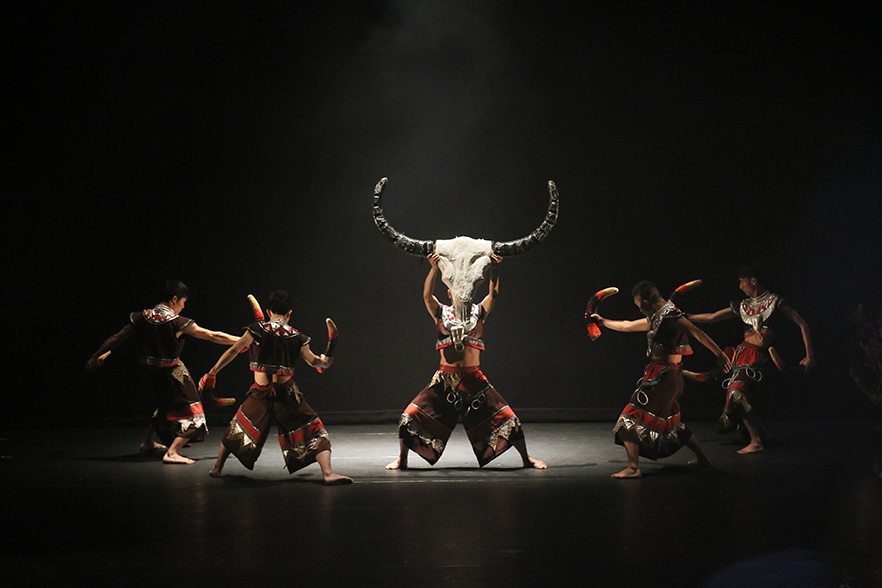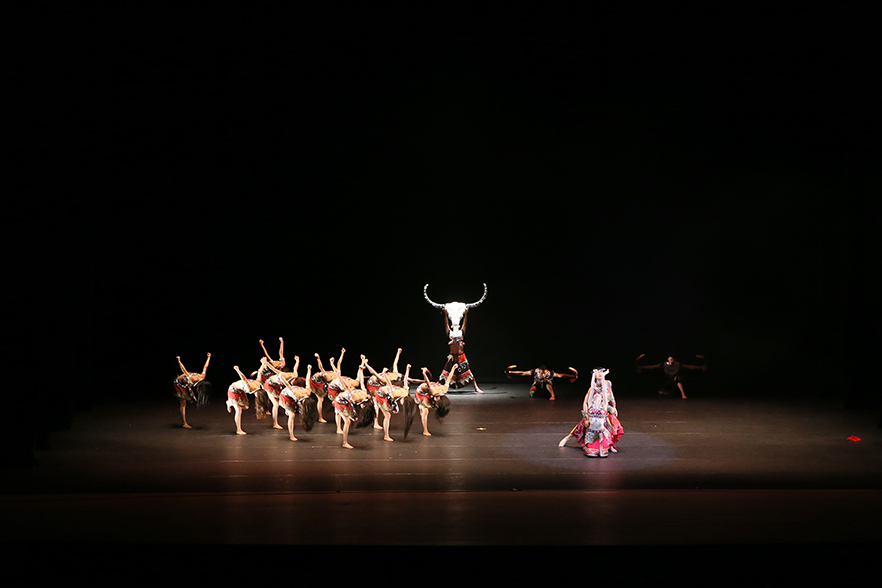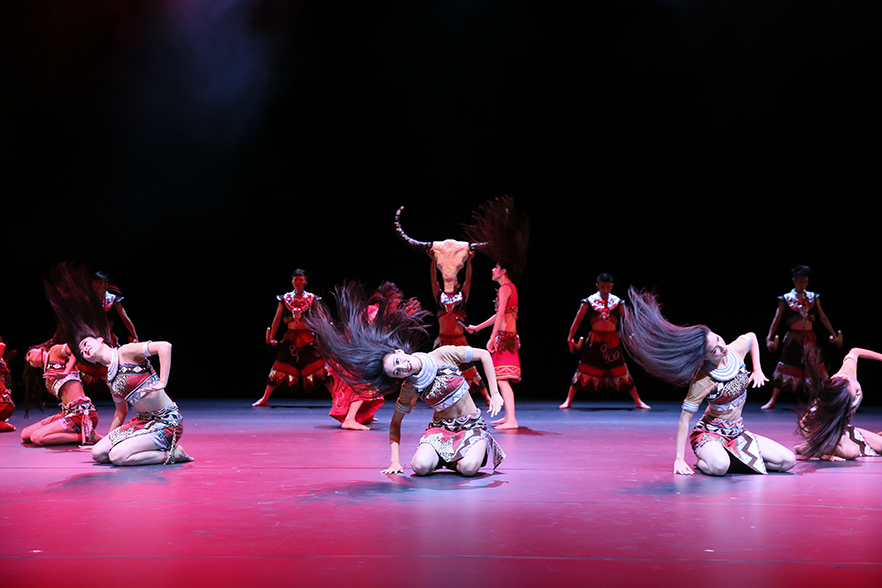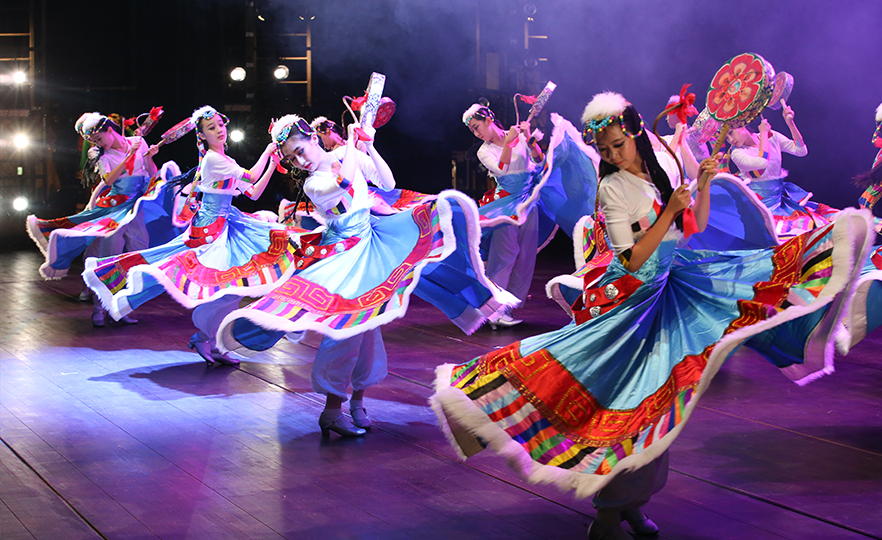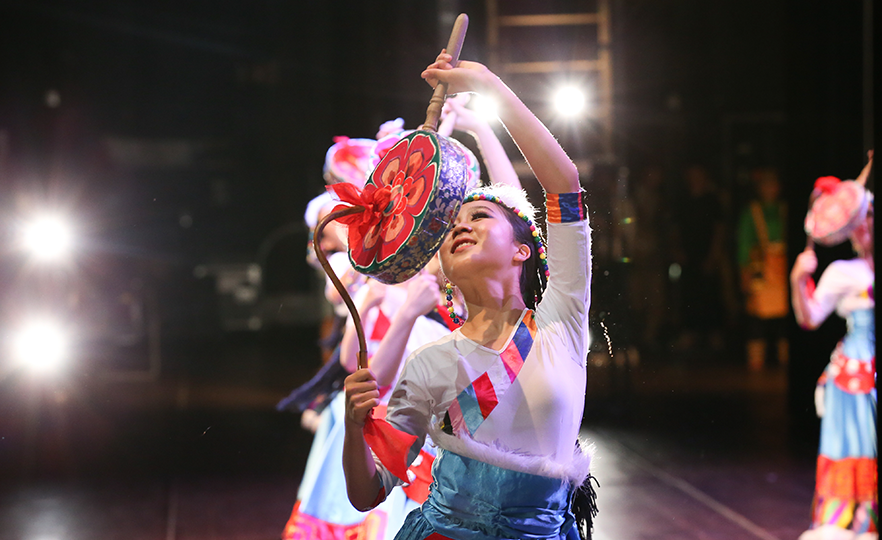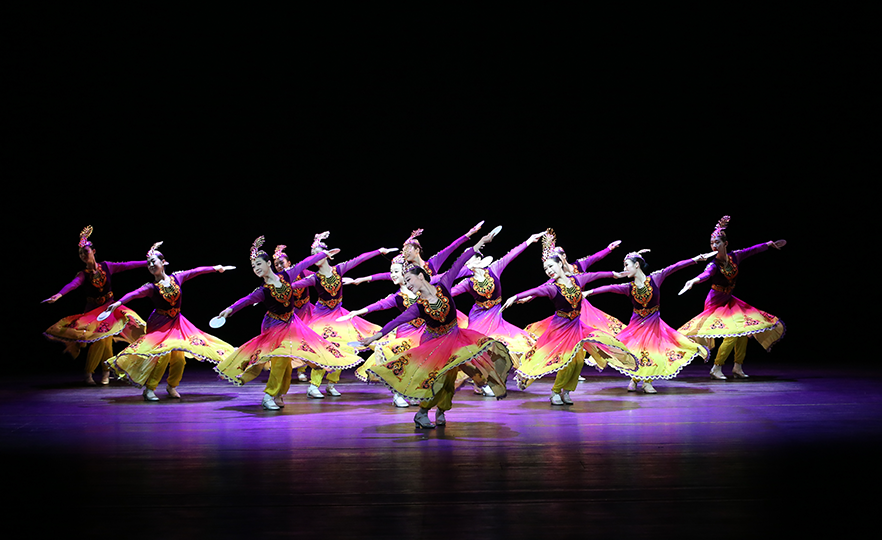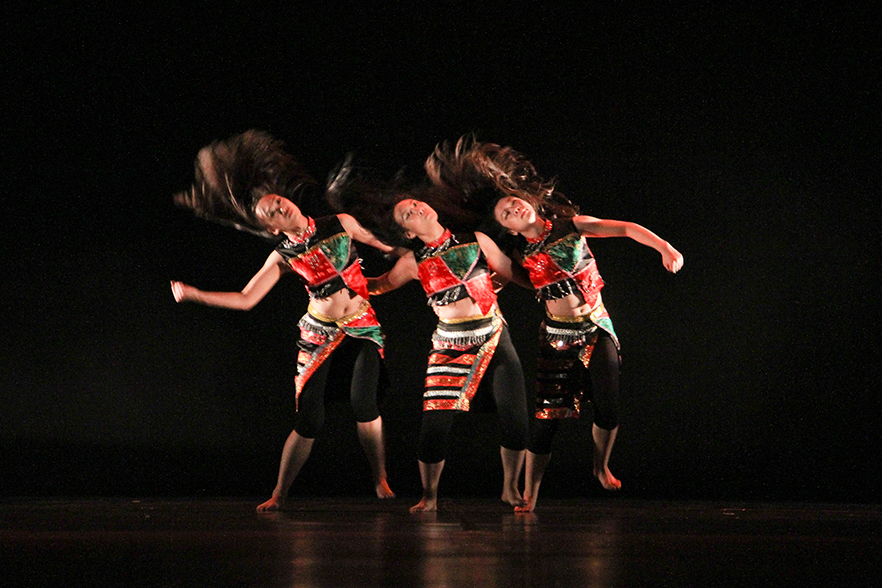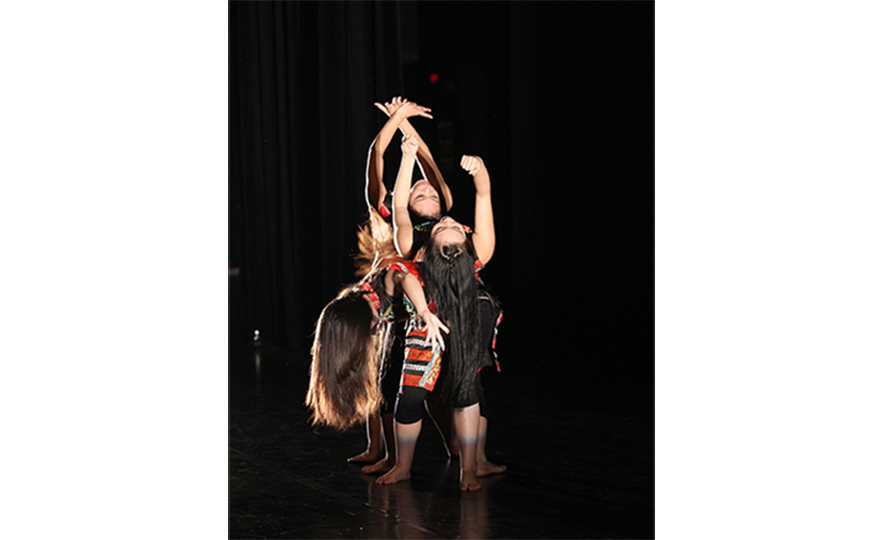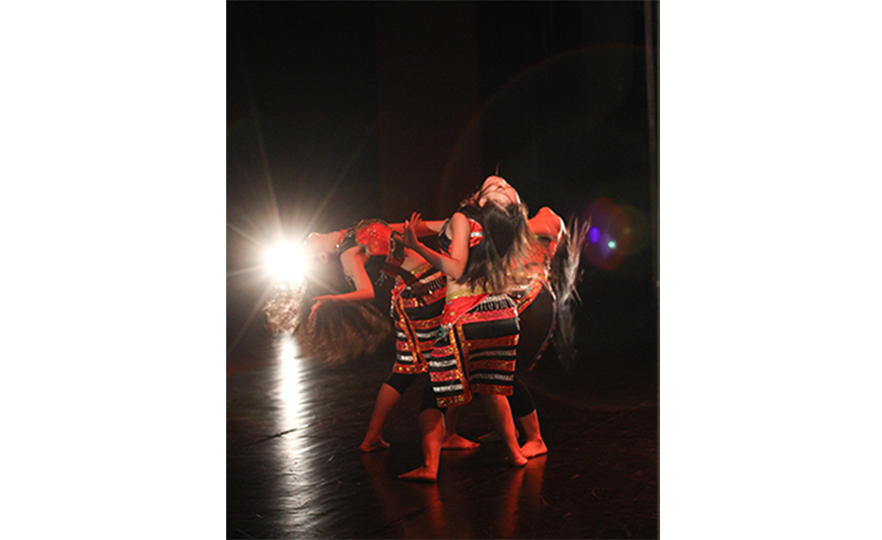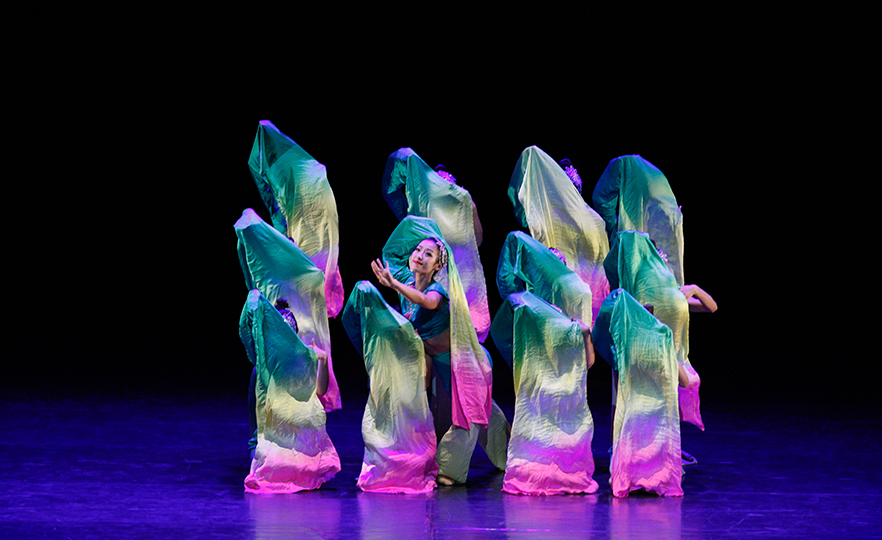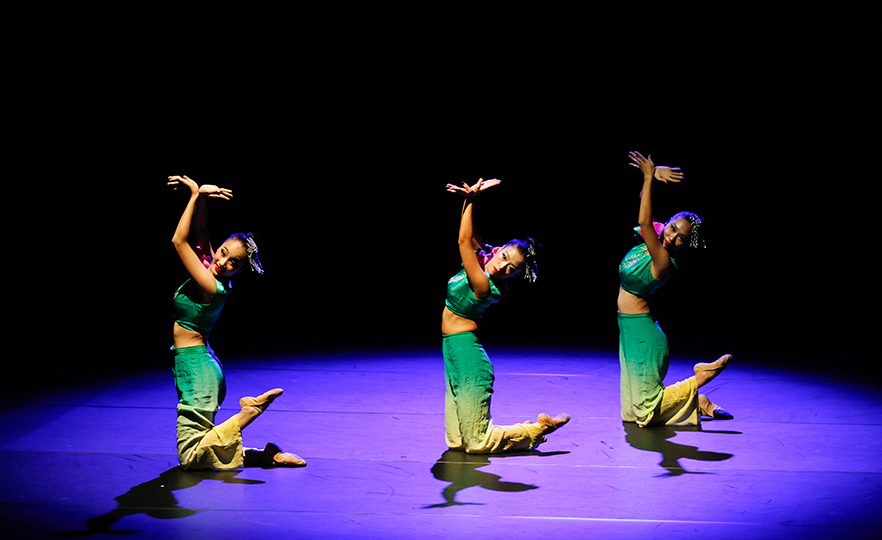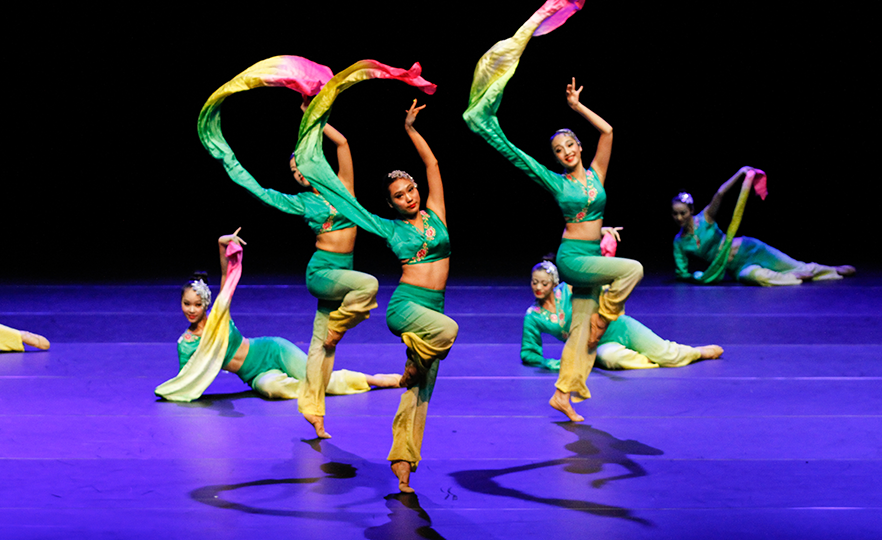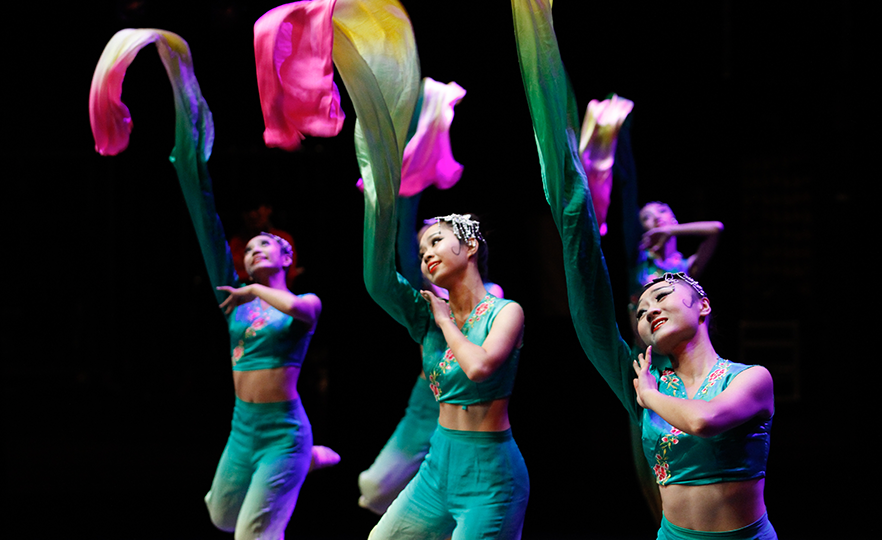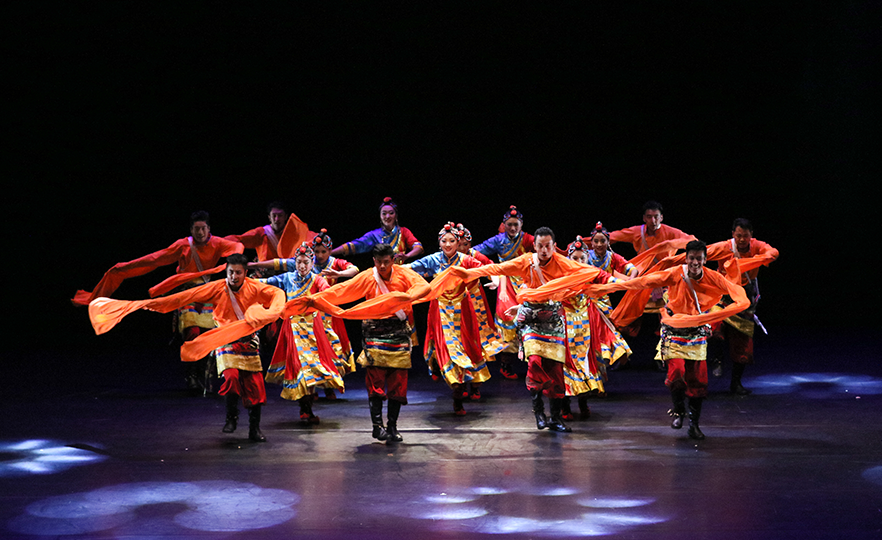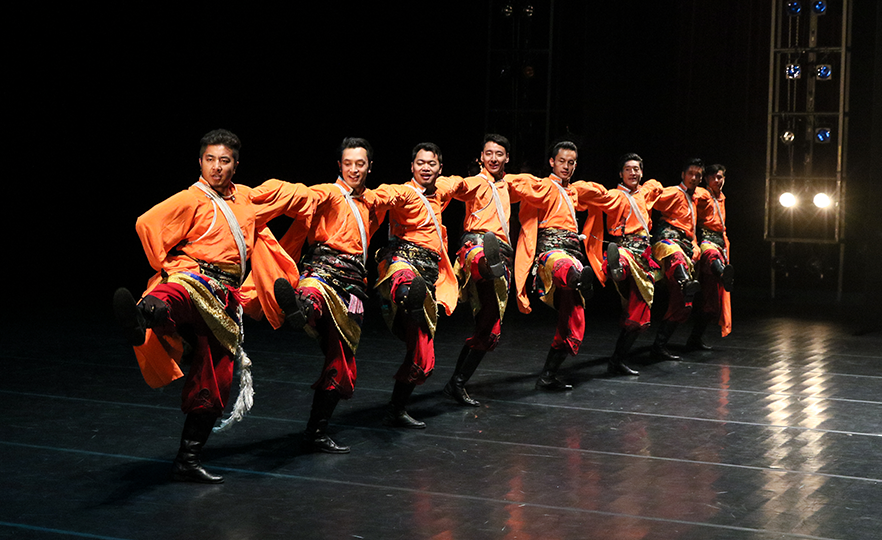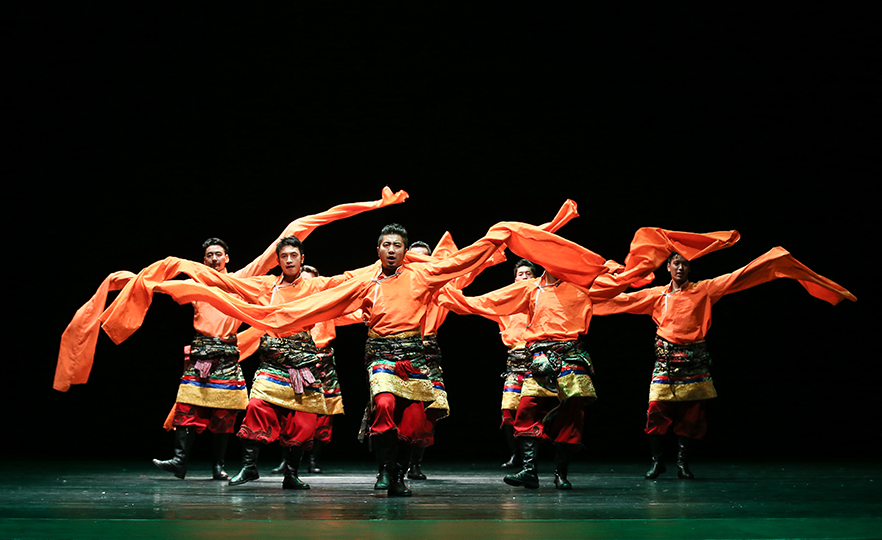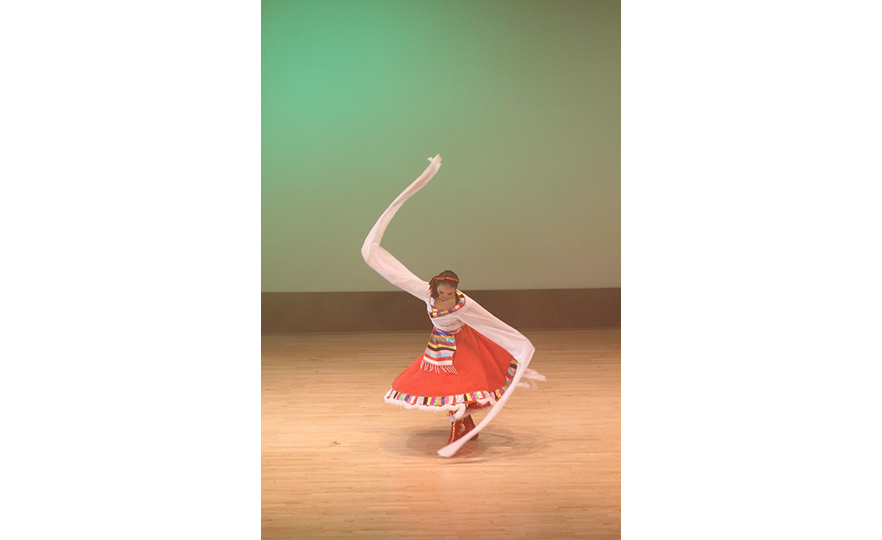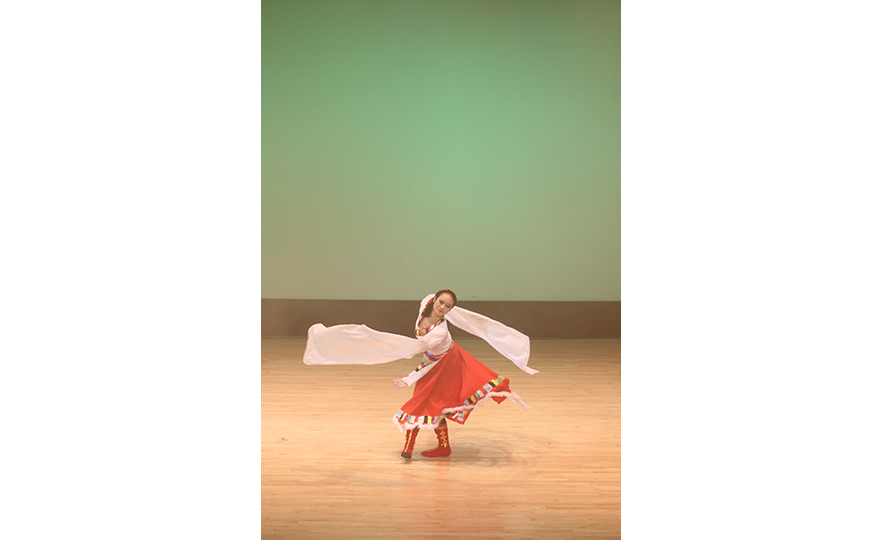Peacock Dance
China∙Yunnan Province∙Dai people
- Performer
- Kunming Ethnic Song and Dance Company
- Date of Performance
- Sep 3, 2016
- Characteristics
- ∙Dance mimicking the movements of animals
- Artistic director
-
- Choreographer
- Yang ZhouVice director of the Kunming Ethnic Song and Dance Company, National grade 1 actor and choreographer, Director of the Association of Chinese Dancers (中國舞蹈家協會), Recipient of the honorary grand prize of the Yunnan Province Youth Dancers’ Association (靑年舞蹈家協會)/ Gan Lu, Head of the Chinese Dance Team at China Oriental Performing Arts Group(中國東方演藝集團 中國歌舞團), National grade 1 choreographer, Director of the Association of Chinese Dancers (中國舞蹈家協會), Judge for the Ministry of Culture’s Grand Prize for Culture 1995-1996/ Tao Chun, Current Director of the Yunnan Province Performing Arts Group, national grade 1 choreographer, Honorary recipient of the Yunnan Literature and Arts Contribution Award, Tang Yong- MFA at the Dongbei Normal University, Member of the Association of Chinese Dancers, Director at the Yunnan Province Association of Dancers, Special professor at Beijing Dance Academy

The peacock is known as the king of the birds in Yunnan. The Dai people especially regard peacocks as symbols of luck, beauty and purity. Even today, people dance or watch the Peacock Dance during joyful occasions or festivals. Many dances among the folk dances of the Dai mimic the movements of animals. The Peacock Dance is the most famous and popular among such dances. There is a set order and format to the Peacock Dance. It consists of movements depicting it coming out of the nest, surveying its surroundings nimbly, walking calmly, find water, drinking water, playing with leisure, flapping its wings or folding and spreading its wings. Although the role of the peacock is usually played by a female dancer these days, it used to be performed by a male dancer in the past. The Dai people make up the 11th largest ethnic minority group in China among the 56 officially recognized by the Chinese government. They are mostly concentrated in the Xishuangbanna Dai Autonomous Prefecture and Dehong Dai and Jingpo Autonomous Prefecture in Yunnan, and further spread out across Laos, Vietnam, Thailand and Myanmar.
Awa of the Sea of Clouds
China∙Yunnan Province∙Wa people
- Performer
- Kunming Ethnic Song and Dance Company
- Date of Performance
- Sep 3, 2016
- Characteristics
- ∙Original dance based on the Shuaifa dance, a traditional Wa dance characterized by the flinging of long hair
- Artistic director
-
- Choreographer
- Yang ZhouVice director of the Kunming Ethnic Song and Dance Company, National grade 1 actor and choreographer, Director of the Association of Chinese Dancers (中國舞蹈家協會), Recipient of the honorary grand prize of the Yunnan Province Youth Dancers’ Association (靑年舞蹈家協會)/ Gan Lu, Head of the Chinese Dance Team at China Oriental Performing Arts Group(中國東方演藝集團 中國歌舞團), National grade 1 choreographer, Director of the Association of Chinese Dancers (中國舞蹈家協會), Judge for the Ministry of Culture’s Grand Prize for Culture 1995-1996/ Tao Chun, Current Director of the Yunnan Province Performing Arts Group, national grade 1 choreographer, Honorary recipient of the Yunnan Literature and Arts Contribution Award, Tang Yong- MFA at the Dongbei Normal University, Member of the Association of Chinese Dancers, Director at the Yunnan Province Association of Dancers, Special professor at Beijing Dance Academy

‘Awa’ is the name the Wa people, a minority ethnic group living in Yunnan Province, use to call themselves. This is an original dance based on a traditional dance of the Wa, which tells the story of a boy combing the hair of his love, and tying their hair around each other’s wrists, expressing the wish to be together always. Hair holds special significance in the culture of the Wa. Dark skin and black hair is a measure of beauty to the Wa, who have dark skin and long black hair. Shuaifa dance, in which female Wa dancers fling their long hair vigorously, is the most famous Wa dance commonly seen at religious rituals and festivals.
Rebagu
China∙Qinghai–Tibet Plateau, Sichuan Province, Qinghai Province, Gansu Province, Yunnan Province∙Zang People=Tibetan peoplee
- Performer
- Yanbian Heumjung Dance Company
- Date of Performance
- Aug 27, 2017
- Characteristics
- ∙Makes use of a small drum with bells (bell drum)
- Artistic director
- Kim Yeong-hwaDean, Department of Dancing Arts, College of Art, Yanbian University (As of 2017). Vice President of the Yanbian Association of Dancers, Member of the Association of Chinese Dancers, Researcher at Ethnic and Folk Dance Research Center, Beijing Dance Academy, Invited professor at the Music Academy, Dongbei Normal University Gold and Silver Awards at National Dance Competitions, Chinese Ethnic Dance Competiton “Lotus Flower Cup”, National Art University Dance Competition “Taoli Cup”, CCTV Dance Competition.
Doctorate Degree at Pyeongyang Music and Dance University, North Korea, 1999. National Visiting Scholar at Korea National University of Arts in 2014.
- Choreographer
- Kim Yeong-hwa

‘Reba’ means ‘wandering performer’ in the Zang language, and Rebagu is a traditional dance which used to be performed by Zang folk performers. It used to be called ‘bell dance’ in the past as the male dancers used bells, while women mostly used drums.
The dancers hold the drum in the left hand and a long drumstick in the right. The most common moves consist of turning left and right and flipping around to hit the drum and rotating the body while holding the drum and drumstick to the crown of the head. Most ordinary people are not able to follow these moves as the beat is very fast while the angle of movement when bending the torso back and forth is too large. Bending the waist or back is a characteristic move in the ethnic dances of Tibet.
Rebagu was originally a totem dance of the primitive Bon religion of the Zang. It developed by absorbing influences from other religions, culture and folk art, to become a proud symbol of the ancient art of the Zang. Rebagu is now a representative dance of not just the Zang people but the whole of China, of well recognized artistic and research value.
When a Pigeon’s Flower Blooms
China∙Sichuan Province∙Qiang people
- Performer
- College of Art, Chengdu Sport University
- Date of Performance
- Oct 3, 2013
- Characteristics
- ∙Originates from shamanic rituals in primitive religion
- Artistic director
- 로봉Dean, College of Art, Chengdu Sport University in 2013. MA from East China Normal University
- Choreographer
-
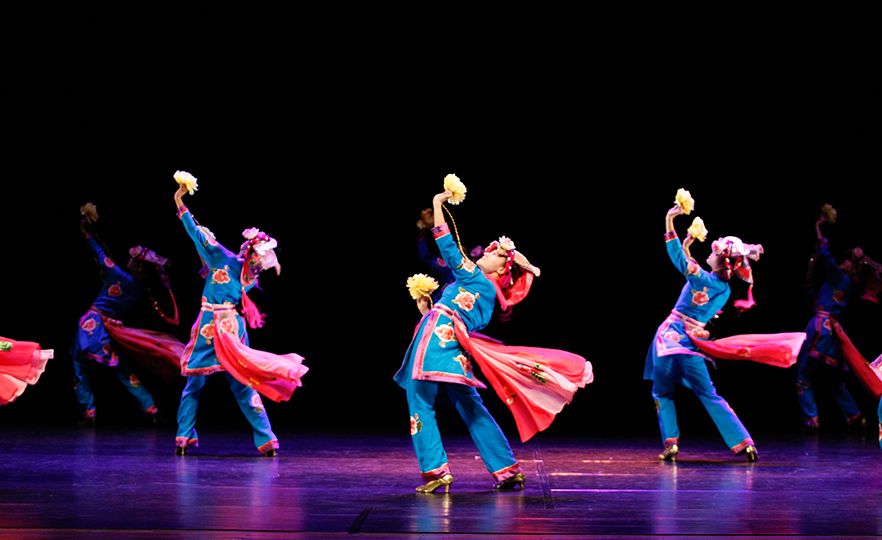
This is an original dance based on the ‘Shoulder Bell Dance’, a representative folk dance of the Qiang people. While the Shoulder Bell Dance originated from the shamanic rituals of the Qiang, it has since evolved into a popular dance performed by women during traditional holidays and ethnic festivals.
The Qiang is a minority ethnic group that lives in Sichuan Province, China. The history of the Qiang people dates back 4,000 years, being almost as long as the history of the Chinese civilization. Due to geographical conditions limiting their interactions with other ethnic groups, the Qiangs have managed to preserve a their culture in its original form relatively well. Music and dance have been a part of daily life and a respite from its hardships for the Qiang since ancient times. The Qiangs are particularly talented in dance, and continue to uphold a remarkable culture of dance.
Sai Nai Mu
China∙Xinjiang Uyghur Autonomous Region∙Uyghur
- Performer
- Yanbian Heumjung Dance Company
- Date of Performance
- Aug 27, 2017
- Characteristics
- ∙Utilizes movements in the daily lives of people in an agrarian culture
∙Head shaking by moving the neck moving side to side
- Artistic director
- Kim Yeong-hwaDean, Department of Dancing Arts, College of Art, Yanbian University (As of 2017). Vice President of the Yanbian Association of Dancers, Member of the Association of Chinese Dancers, Researcher at Ethnic and Folk Dance Research Center, Beijing Dance Academy, Invited professor at the Music Academy, Dongbei Normal University Gold and Silver Awards at National Dance Competitions, Chinese Ethnic Dance Competiton “Lotus Flower Cup”, National Art University Dance Competition “Taoli Cup”, CCTV Dance Competition.
Doctorate Degree at Pyeongyang Music and Dance University, North Korea, 1999. National Visiting Scholar at Korea National University of Arts in 2014.
- Choreographer
- Kim Yeong-hwa
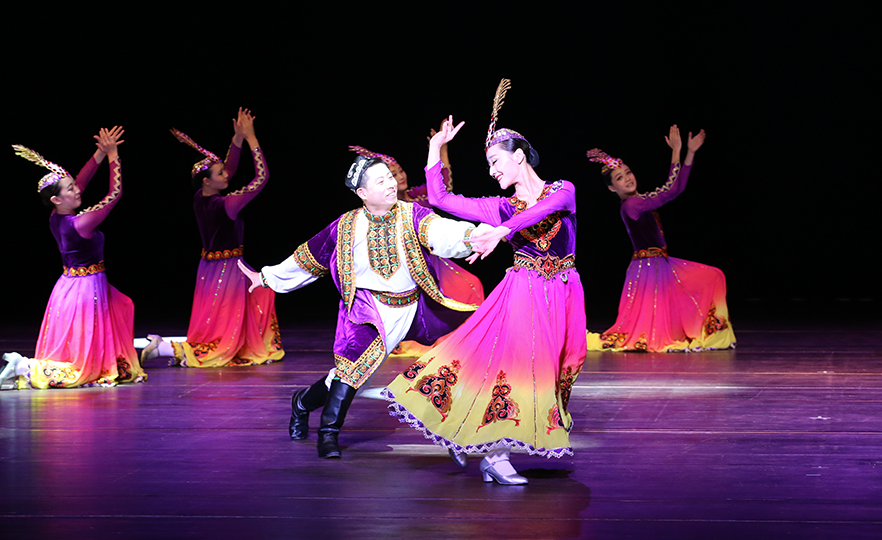
Sai Nai Mu (赛乃姆) is a folk dance rooted in the lives, customs, characteristics and clothing of the Uyghurs in Xinjiang, China. It has been widely transmitted among ordinary people in an agrarian environment. The dance moves also contain many motions from their daily lives, such as holding the hat, folding up the sleeves, dragging the skirt, and touching the chest while looking far away. A characteristic move is head shaking, moving the neck left and right. The knees are used fluidly to give a sensation of lightness and agility.
The Uyghurs dance the Sai Nai Mu on joyful occasions such as festivals or weddings. There is no set order for the format and movements, being impromptu and free in spirit. Although it is usually danced in couples, there is no restriction to the number of people and anyone can join in. The music is lyrical and elegant, but can shift to a more exuberant rhythm and pace according to the atmosphere of the moment.
The Uyghurs are a Turkic ethnic group which used to be active in the Mongolian highlands and Central Asia and currently reside mainly in the Xinjiang Uyghur Autonomous Region in Northwestern China. The Sai Nai Mu of the Uyghurs is a national grade intangible heritage registered in the Chinese Cultural Heritage and a compulsory subject in the middle school curriculum of China.
Wa Shan Lie
China∙Yunnan Province∙Wa people
- Performer
- Seo Eun Dance Company
- Date of Performance
- Oct 27, 2012
- Characteristics
- ∙An adaptation of the traditional Shuaifa dance of the Wa, characterized by the flinging of long hair
- Artistic director
- Zhang Ge(張格)Dean, College of Dance, Shanxi Arts Vocation College. Graduate of the Beijing Dance Academy, Principal dancer at the Lanzhou Military Region Battle Cultural Performance Group, Won Outstanding Direction at the 10th National ‘Taoli Cup’ Dance Competition.
- Choreographer
- Li YingArtistic Director and Choreographer. Professor at College of Dance, Xian Music Academy, MA in Pedagogy at Open University of Hong Kong. Principal dancer at the Nanjing Military Region Political Propaganda Dance Company, Silver Prize for Choreography at the 2nd National Collegiate Arts Festival in 2008, Gold Prize for Choreography at the Shanxi Dance Competition in 2002

This is an original dance based on the iconic Shuaifa dance of the Wa minority group in China, expressing their hunting lifestyle. Male and female dancers fling their long black hair energetically, impressing the audience with powerful and controlled movements. Shuaifa dance, in which female Wa dancers fling their long hair vigorously, is the most famous Wa dance commonly seen at religious rituals and festivals.
Spring Rain
China∙Qinghai–Tibet Plateau, Sichuan Province, Qinghai Province, Gansu Province, Yunnan Province∙Zang People = Tibetan People
- Performer
- College of Art, Chengdu Sport University
- Date of Performance
- Oct 3, 2013
- Characteristics
- ∙Original dance based on the Shuixiu dance
∙Vigorous flinging of the long shuixiu sleeves
- Artistic director
- 로봉Dean, College of Art, Chengdu Sport University in 2013. MA from East China Normal University
- Choreographer
-
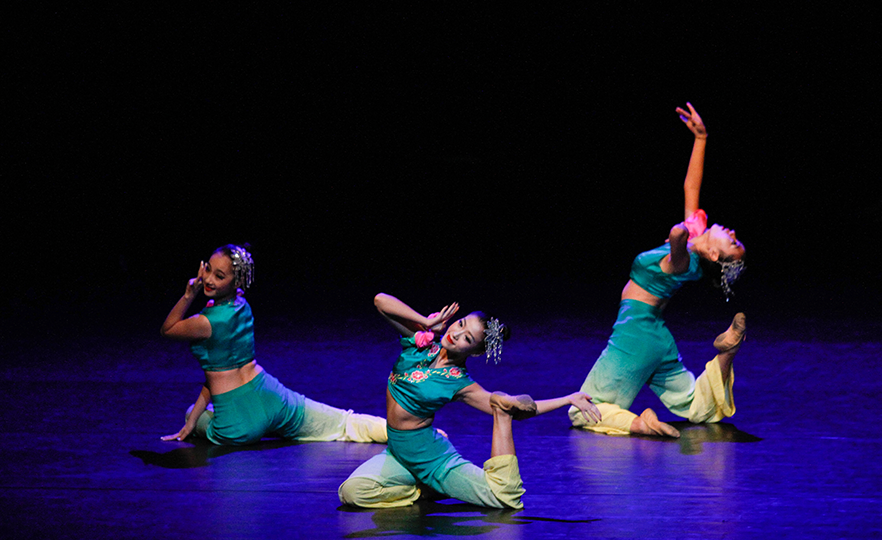
Spring Rain is an original dance based on the Shuixiu dance, a traditional dance of the Zang people which has become a representative form of Chinese classical dance. It expresses the rain falling in spring and beautiful natural landscapes in elegant movements.
Shuixiu dance is a ‘long sleeved dance’ performed while wearing clothes with long flowing sleeves. It is characterized by the flinging and catching of the long sleeves. The essence of Shuixiu dance lies in its harmonious and beautiful curves. It represents the aesthetic character of Shuixiu while keeping with the unique philosophy and temperament of the Zangs, which seeks harmony, peace, coexistence and concordance.
Shui Xiu dance, originally performed at religious rituals, was relatively preserved in its original form due to the isolation of the Tibetan society until the 1950s. Its artistic value came to light internationally after the opening up of China in 1978. With the coming of the ‘New China’ era, large numbers of Shuixiu practitioners began to move to large cities to spread the dance, leading to its present day status as a traditional dance enjoyed by the entire Chinese nation.
Tita Dance
China∙Qinghai–Tibet Plateau, Sichuan Province, Qinghai Province, Gansu Province, Yunnan Province∙Zang People=Tibetan people
- Performer
- Ganzi Tibetan Autonomous Region Ethnic Dance Company
- Date of Performance
- Sep 2, 2015
- Characteristics
- ∙Stepping on the ground with heavy boots to make sounds
- Artistic director
- Liu lifuDirector, Ganzi Tibetan Autonomous Region Ethnic Dance Company, Vice President of the Ganzi Tibetan Autonomous Region Culture and Arts Association, Director of the Zang cultural performance “Let’s Go Into Mount Gongga”
- Choreographer
-
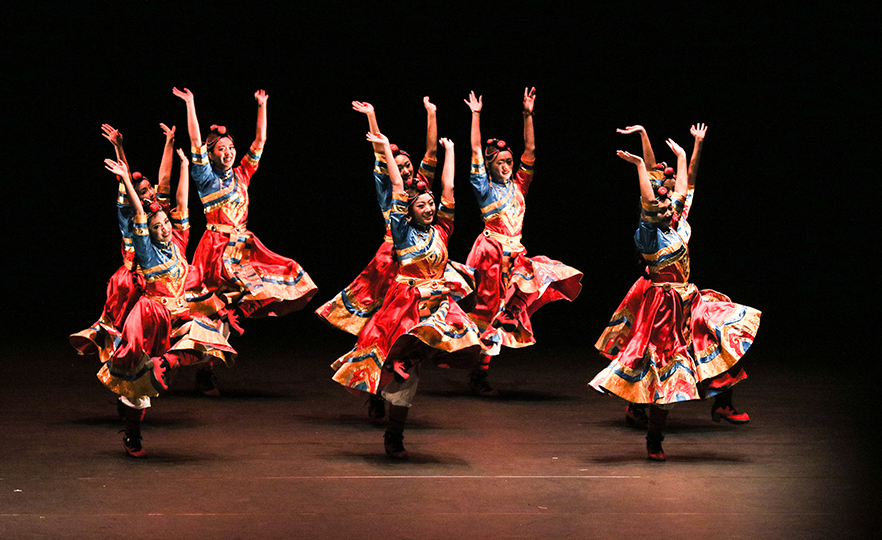
The Tita dance (踢踏舞) is a form of mass dance performed for entertainment, passed down in various regions inhabited by the Zang people. It is very lively and fast paced. ‘Ti(踢)’ means to kick in mandarin Chinese, while ‘Ta(踏)' means to step. Together, ’Tita’ refers to the motion of energetic kicking and stepping. True to the name, the dance is characterized by stepping on the ground with thick and heavy boots in time to the beat to produce sounds. While the soles and heels of the feet alternate in tapping the ground, the torso moves along in harmony. The dancers wear colorful costumes, with bells around their waists and legs that ring out joyfully.
The Tita Dance used to be performed only in fall each year, in Zang temples. However, after its spread to the public, it was performed without restrictions, on every important occasion such as festivals, gatherings and celebrations. Originally, only men were allowed to dance the Tita Dance. The greater the number of participants, the more fervent the atmosphere and the grander the sight. The Tita Dance of the Sichuan region originated from Tibet, and is characterized by crisp and exuberant rhythms.
Xuanzi Dance
China∙Tibet Autonomous Region, Sichuan Province, Yunnan Province∙Zang People = Tibetan People
- Performer
- Ganzi Tibetan Autonomous Region Ethnic Dance Company
- Date of Performance
- Nov 21, 2011
- Characteristics
- ∙Waving or shaking arms while wearing traditional costumes with long sleeves
∙Light, soft and relaxed movements
- Artistic director
- Liu lifuDirector, Ganzi Tibetan Autonomous Region Ethnic Dance Company, Vice President of the Ganzi Tibetan Autonomous Region Culture and Arts Association, Director of the Zang cultural performance “Let’s Go Into Mount Gongga”
- Choreographer
-
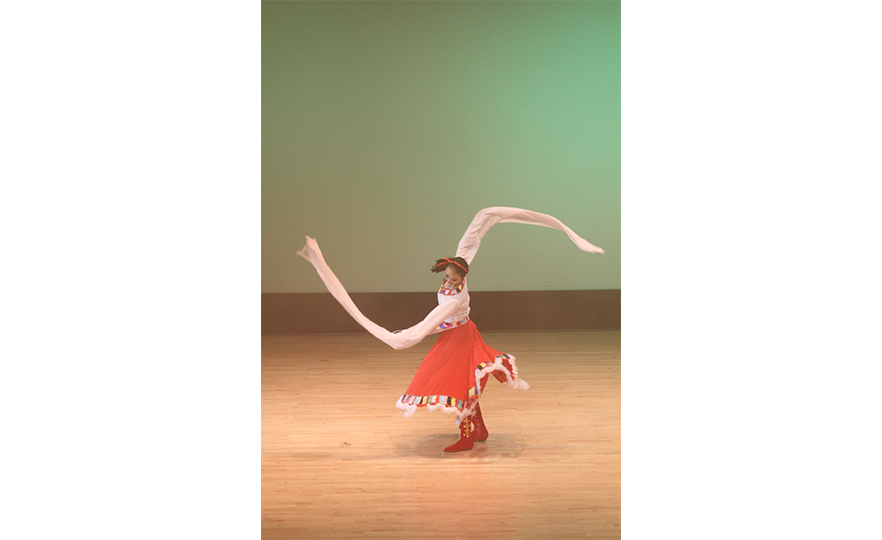
Xuanzi Dance is performed at gatherings such as holiday celebrations and weddings in regions populated by the Zang people such as the Sichuan and Yunnan provinces. Everyone participates in this communal dance, coming into a large circle. Xuanzi dance is an expression of the unique sentiments and emotions of the Zang, passed down over generations and recognized as the pinnacle of traditional Zang dances.
Xuanzi dance is characterized by the four qualities of lightness, softness, bouncing and spontaneity. The dancers keep bouncing up and down on their knees throughout the dance. The movements of the upper body include flailing the arms while wearing the traditional long-sleeved costume of the Zangs, waving the sleeves, covering the arms with the sleeves and throwing the sleeves. These movements create the elegant and beautiful lines of Xuanzi. The line is a crucial element in Chinese aesthetics and the aesthetics of Chinese dance. This aesthetic of lines is clearly visible in Xuanzi dance.










